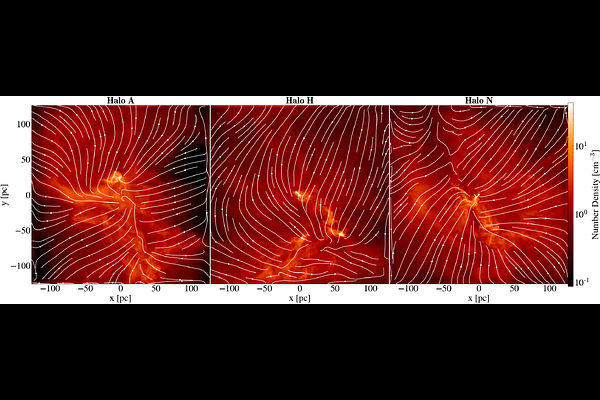Turbulence in Primordial Dark Matter Halos and Its Impact on the First Star Formation

Turbulence in Primordial Dark Matter Halos and Its Impact on the First Star Formation
Meng-Yuan Ho, Ke-Jung Chen, Pei-Cheng Tung
AbstractWe present high-resolution simulations of the first star-forming clouds in 15 minihalos with masses ranging from $\sim 10^5$ to $10^7\ \text{M}_{\odot}$ at redshifts $z \sim 17 - 20$, using the \texttt{GIZMO} code. Our simulations incorporate detailed primordial gas physics and adopt initial conditions from the state-of-the-art TNG cosmological simulations. To achieve the required resolution, we apply a particle-splitting technique that increases the resolution of the original TNG data by a factor of $\sim 10^5$, reaching gas and dark matter particle masses of $0.2\ \text{M}_{\odot}$ and $80\ \text{M}_{\odot}$, respectively. This enables us to resolve gas accretion during the early assembly of minihalos and to capture the emergence of strong turbulent flows. We find that turbulence, driven by gas infall into the dark matter potential wells, is predominantly supersonic, with characteristic Mach numbers ranging from $1.8$ to $4.2$, increasing with halo mass. The supersonic turbulence effectively fragments the central gas cloud into multiple dense clumps, some of which form gravitationally bound cores and begin to collapse into the first stars. Our results suggest that supersonic turbulence is a common feature in minihalos and plays a key role in generating clumpy star-forming clouds, with important implications for the initial mass function of the first stars.